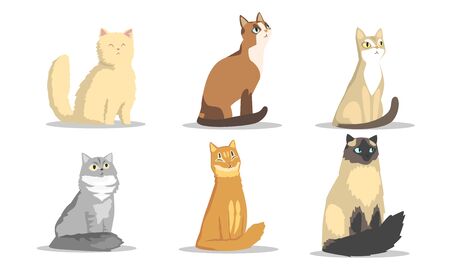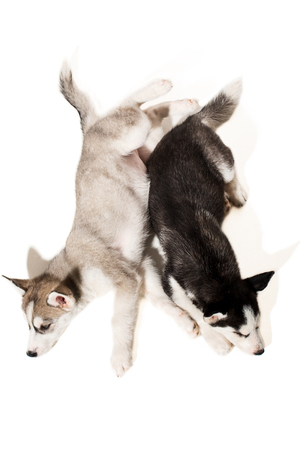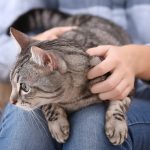1. Introduction to Feline Communication
Cats have a unique way of communicating with humans and other animals. Unlike dogs, which rely heavily on vocalizations, cats use a mix of body language, facial expressions, and sounds to express their emotions and needs. Understanding these signals can help you build a stronger bond with your feline friend and ensure their well-being.
How Cats Use Body Language
Cats primarily communicate through their body posture, tail movements, and facial expressions. Each movement or position can tell you a lot about how they are feeling.
Common Cat Body Language Signals
| Body Language | Meaning |
|---|---|
| Tail Upright with a Slight Curve at the Tip | Your cat is happy and confident. |
| Puffed-Up Tail | Your cat feels threatened or scared. |
| Ears Pinned Back | A sign of fear, aggression, or irritation. |
| Sitting with Paws Tucked Under | Your cat is relaxed and comfortable. |
| Straight Stare with Dilated Pupils | This can indicate excitement or aggression. |
| Slow Blinking | A sign of trust and affection towards you. |
The Role of Vocalizations in Cat Communication
Cats also use different sounds to communicate their emotions and desires. While some breeds are more vocal than others, all cats have specific sounds they use to express themselves.
Common Cat Vocalizations and Their Meanings
| Vocalization | Description & Meaning |
|---|---|
| Purring | A sign of contentment, but sometimes also used when in pain or distress. |
| Meowing | Mainly used for human interaction; can indicate hunger, attention-seeking, or discomfort. |
| Hissing & Growling | A defensive reaction showing fear, aggression, or discomfort. |
| Chirping & Trilling | A friendly greeting or an attempt to get your attention. |
| Caterwauling (Loud Yowling) | A sign of mating behavior, distress, or confusion (especially in older cats). |
The Importance of Context in Cat Communication
No single body movement or sound should be interpreted in isolation. Cats combine multiple signals to convey their emotions. For example, a slow blink paired with a relaxed posture shows trust, while pinned-back ears along with growling indicate stress or aggression. Observing your cat’s overall behavior and the surrounding environment will help you better understand what they are trying to tell you.
Tuning Into Your Cat’s Signals
The more time you spend observing your cat’s behavior, the better you’ll become at interpreting their signals. Paying attention to their body language and vocal cues allows you to respond appropriately, strengthening your relationship and ensuring your cat feels safe and understood.
2. Tail Movements and Their Meanings
A cat’s tail is like a mood indicator, revealing how they feel in different situations. By paying attention to their tail movements, you can better understand what your feline friend is trying to communicate. Below are some common tail positions and what they mean.
Common Cat Tail Positions and Their Meanings
| Tail Position | Meaning |
|---|---|
| Raised Tail (Straight Up) | Your cat feels confident, happy, and friendly. This is often seen when they greet you or another familiar cat. |
| Puffed-Up Tail | A sign of fear or feeling threatened. Your cat is trying to appear larger to ward off potential danger. |
| Tucked Tail | This indicates insecurity, submission, or fear. Your cat may be feeling anxious or nervous. |
| Slightly Curved Tail (Question Mark Shape) | Your cat is curious and in a playful mood. They might be open to interaction. |
| Twitching or Flicking Tail | This usually means irritation, annoyance, or mild agitation. If the flicking becomes rapid, your cat may be preparing to pounce or leave. |
| Lashing or Thrashing Tail | A strong warning sign that your cat is upset or overstimulated. It’s best to give them space. |
| Tail Wrapped Around Another Cat or Person | A sign of affection and bonding. Your cat is comfortable and trusts the person or companion. |
The Importance of Observing Context
A cat’s tail movement should always be interpreted along with other body language cues such as ear position, eye shape, and overall posture. For example, a flicking tail combined with flattened ears likely means your cat is irritated, whereas a raised tail with relaxed ears signals friendliness.
How to Respond to Different Tail Movements
- If your cat has a raised tail: Feel free to approach them—they’re feeling friendly!
- If their tail is puffed up: Avoid sudden movements; they might be scared.
- If their tail is flicking rapidly: Give them space before they become more agitated.
- If they wrap their tail around you: Enjoy the moment—your cat is showing affection!
The More You Observe, the Better You’ll Understand
The more time you spend watching your cat’s tail movements and pairing them with their behaviors, the easier it will be to understand their moods and needs. Every cat has unique ways of expressing themselves, but their tails provide valuable insights into their emotions.

3. Ear Positions and What They Signal
Cats use their ears to express a wide range of emotions and intentions. By observing how your cat positions its ears, you can gain valuable insight into their mood. Whether they are feeling relaxed, curious, or threatened, ear movements provide important clues.
Understanding Different Ear Positions
A cat’s ears are highly mobile and can rotate independently to pick up sounds from various directions. Here’s what different ear positions typically mean:
| Ear Position | Meaning |
|---|---|
| Forward | Your cat is alert, curious, or engaged with something in their environment. This is often seen when they are playing or watching something interesting. |
| Slightly Sideways (Neutral) | A relaxed and content cat often has their ears slightly tilted to the side. They feel safe and comfortable in their surroundings. |
| Pinned Back or Flattened | This indicates fear, aggression, or discomfort. If your cat’s ears are completely flattened against their head, they may be scared or preparing to defend themselves. |
| Twitching Ears | Nervousness, irritation, or heightened awareness. A twitching ear might mean your cat is annoyed or detecting faint sounds. |
How to Respond to Your Cat’s Ear Signals
If Their Ears Are Forward
Your cat is likely feeling happy and engaged. You can interact with them through play or petting if they seem receptive.
If Their Ears Are Sideways
This usually means your cat is calm. Continue providing a peaceful environment where they feel secure.
If Their Ears Are Flattened
Avoid sudden movements and give them space. Flattened ears suggest they are scared or defensive, so it’s best not to force interaction.
If Their Ears Are Twitching
Your cat may be irritated or overstimulated. Watch for other body language cues to determine if they need a break from attention.
Paying attention to your cats ear movements can help you understand their emotions better and strengthen your bond with them. By responding appropriately, you create a more trusting relationship with your feline friend.
4. Eye Contact and Blinking
Cats communicate a lot through their eyes, and understanding their eye contact and blinking behavior can help you build trust with your feline friend. Whether it’s a slow blink, dilated pupils, or an intense stare, each expression carries meaning.
Slow Blinking: A Sign of Trust
A cat that gives you a slow blink is showing affection and trust. Often referred to as “cat kisses,” this gentle closing and opening of the eyes signals that your cat feels safe around you. You can return the gesture by slowly blinking back to reassure them.
Dilated Pupils: Excitement or Fear?
A cat’s pupils can quickly change in size depending on their emotions. Here’s what different pupil sizes may indicate:
| Pupil Size | Possible Meaning |
|---|---|
| Dilated (large) | Excitement, playfulness, or fear |
| Narrow (small) | Focus, aggression, or relaxation in bright light |
Prolonged Stares: Dominance or Curiosity?
If a cat stares at you without blinking, it could mean different things depending on the context. A relaxed stare may indicate curiosity, while a hard stare with tense body language could signal aggression or dominance. If a cat is staring intensely at another pet, it might be trying to assert control.
5. Purring, Kneading, and Other Physical Cues
Understanding your cat’s body language is essential for building a strong bond and ensuring their well-being. Cats use physical cues like purring, kneading, and different postures to express emotions such as happiness, anxiety, or affection. Let’s break down these behaviors and what they mean.
Purring: More Than Just a Happy Sound
Purring is often associated with contentment, but it can also indicate other emotions. While a cat purring in your lap usually means they feel safe and happy, cats may also purr when they are nervous, in pain, or even trying to comfort themselves.
| Purring Situation | Possible Meaning |
|---|---|
| While being petted | Contentment and relaxation |
| During a vet visit | Self-soothing due to stress |
| When injured or sick | Possible pain relief mechanism |
| Near another cat or person | Seeking attention or bonding |
Kneading: A Comforting Habit from Kittenhood
Kneading—when a cat pushes its paws rhythmically against a soft surface—is an instinctive behavior rooted in kittenhood. Kittens knead their mother’s belly to stimulate milk flow, and adult cats often continue this habit as a sign of comfort.
Why Do Cats Knead?
- Comfort and Relaxation: Many cats knead when they are feeling particularly relaxed or affectionate.
- Marking Territory: Cats have scent glands in their paw pads, so kneading may be their way of marking their favorite spot.
- Nesting Instinct: Some cats knead before settling down for a nap, similar to how wild cats prepare their sleeping area.
Other Physical Cues That Reveal Your Cat’s Mood
Tail Position and Movement
A cat’s tail can reveal a lot about their mood. Here’s what different tail positions might mean:
| Tail Position | Meaning |
|---|---|
| Upright with a slight curve at the tip | Friendly and confident |
| Puffed-up tail | Fearful or defensive |
| Tucked between legs | Anxious or submissive |
| Slowly swishing tail | Focused or curious |
| Lashing back and forth rapidly | Irritated or agitated |
Body Posture: Relaxed vs. Tense Cats
The way your cat holds its body can indicate whether they feel safe or threatened. A relaxed cat will have loose muscles, lie on its side, or stretch out comfortably. In contrast, an anxious or defensive cat may crouch low to the ground with ears flattened.
Signs of a Happy Cat:
- Lying on their back with an exposed belly (though not all cats enjoy belly rubs!)
- Sitting upright with soft eyes and slow blinks (a sign of trust)
- A gently swaying tail while resting next to you
Signs of an Anxious or Stressed Cat:
- Ears pinned back against the head
- Crouching low with dilated pupils
- A twitching or flicking tail signaling irritation
- Avoiding eye contact or trying to hide under furniture
By paying close attention to these physical cues, you can better understand your cat’s emotions and respond appropriately to ensure they feel comfortable and secure.


